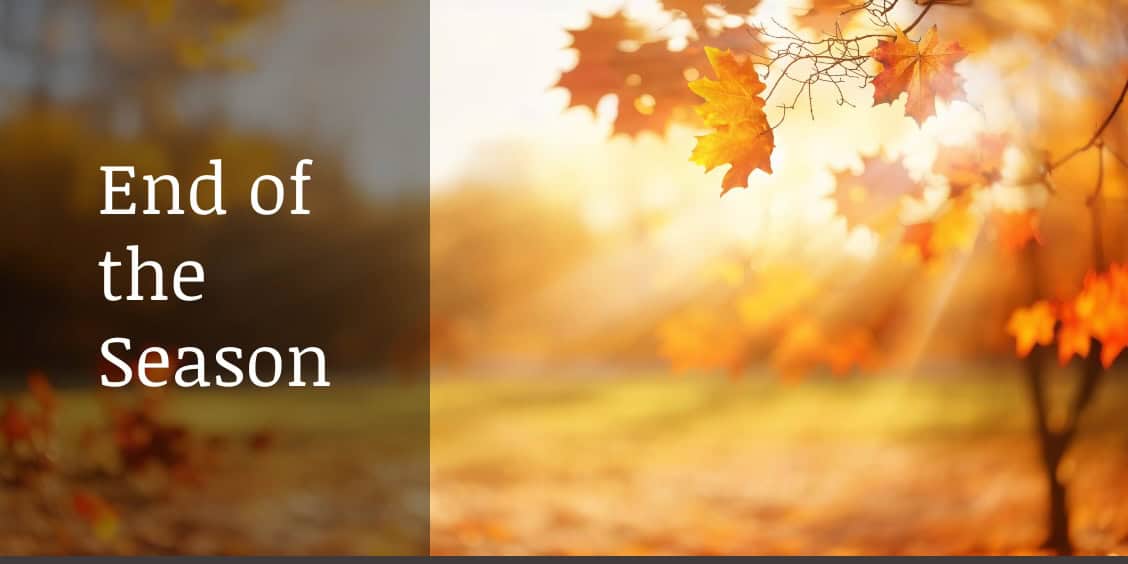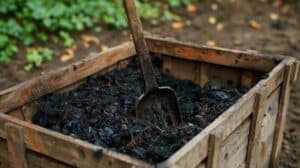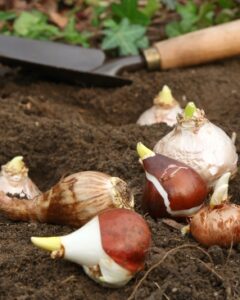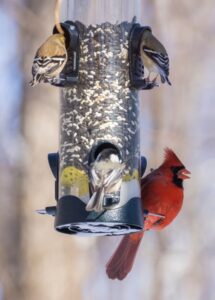
I hope that you were able to take advantage of the lovely weather the last few days to get things done in your yard and gardens. It was perfect for getting things cleaned up and put away, before the onset of cold weather. It looks like we have probably seen the last of the combination of those kinds of temperatures and clear skies, but we still aren’t seeing anything like winter in the forecast yet, so there’s still some opportunity to get the work done. That’s a good thing for me – I have so much to do!
Jennifer
This month’s issue of Let’s Get Gardening
Subscribe to our monthly newsletter for seasonal gardening advice and recommendations for your garden, yard, and bird feeding.
In the vegetable garden:
- If you haven’t already cleaned out the leftover plant material from your vegetable garden, it’s a good idea to do it now. Things like kale could still produce for a while yet, so leave that for now. Most everything else should be tossed in the compost pile, as long as it wasn’t showing signs of disease.
- Pull weeds and throw them in the compost pile, too. Doing that now will help cut down on the weeds you need to deal with in the spring.

- Speaking of compost, if you haven’t turned your pile lately, that’s another thing to do now. While we’re still having some warmer temperatures, getting the stuff that’s on top down into the center and bottom of the pile will give it the chance to heat up and start decomposing before the cold sets in and all the heat is lost.
- If you have compost that’s ready, add it to your garden once you’ve cleaned the garden up. Till it in lightly to get it mixed with the soil, and to expose weed seeds and insects. The birds will thank you!
- The temperatures we’ve been seeing lately mean that the soil still hasn’t cooled down much yet, so there’s still plenty of time to get garlic planted. It’s best to wait until the soil has had a chance to really cool down before planting garlic. Planting when the soil is still warm could encourage garlic bulbs to start putting out foliage just about the time that the real cold stuff shows up, which could stunt growth or even kill your plants.
- About the time you plant garlic, you can also try sowing some peas and spinach. Both of these seeds can generally overwinter well, and by planting them in late fall, they might come up a little earlier, giving you a head-start on your garden in the spring.
In the flower garden:
- Pull spent annuals this month. Compost them, as long as they are not showing any signs of disease. Leave perennials standing to provide shelter for beneficial insects over the winter and seeds for the birds.
- Remove weeds from your flower beds to give you a head-start on next spring.
- Once the soil has cooled down, add a layer of fresh mulch to your flower beds to help protect the plants’ roots from frost heave this winter.
 Just like garlic, once the soil has cooled down, plant spring-blooming flower bulbs, such as tulips, daffodils, crocus, hyacinths, and alliums. Bulbs can be planted all the way up until the ground is frozen, but I prefer to do it as soon as it feels like we have really started to cool down, just so I’m not out in the bitter cold trying to get it done.
Just like garlic, once the soil has cooled down, plant spring-blooming flower bulbs, such as tulips, daffodils, crocus, hyacinths, and alliums. Bulbs can be planted all the way up until the ground is frozen, but I prefer to do it as soon as it feels like we have really started to cool down, just so I’m not out in the bitter cold trying to get it done.- If you have been waiting to clean out your containers, because the plants just keep looking too nice to pull out, that’s probably not going to be the case a whole lot longer. Plan on cleaning them out by mid-month, or at least moving them to a sheltered location so they last a little longer. Once you’ve cleaned them out, store the planters somewhere where they will be out of the weather for the winter.
Trees and Shrubs:
- The only pruning of trees and shrubs that should be done between now about February is to remove dead or damaged branches, so avoid the temptation of trimming back unruly stuff.
- While the ground is still soft, put up stakes to use to attach burlap to for wind barriers around evergreen trees and shrubs. You can wait a little bit to put the burlap up, but having the stakes in place now means you aren’t trying to pound them into the frozen ground.
- Make sure that your trees and shrubs go into winter fully hydrated. The forecast for next week is showing some promising signs of rain, which we could sorely use, but keep hoses handy while the temperatures are still above freezing, so that you can water your trees and shrubs if we aren’t getting at least an inch of rain each week. This will help to prevent damage caused by the drying winds we get all winter. Be sure to fully empty hoses after each use at this time of year so that you don’t risk having the water in them freeze and expand, causing the hose to crack when we dip into the low-thirties at night.
- As with your flower beds, add a layer of fresh mulch to trees and shrubs, once the soil has cooled, to help them maintain moisture and protect their roots through the winter.
Lawn and Leaves:
- If you haven’t done your final mowing for the year yet, it’s probably going to happen very soon. Grass growth has slowed down significantly since the frosts we got a week or so ago, so it’s time to think about cleaning up and putting away the mowers and other lawn equipment.
- Leaves are still coming down, especially with the wind we got to close out October. If you have a lot of leaves, it’s not a bad idea to rake them up from your lawn to prevent problems like mold forming in the grass over winter. Don’t burn them or bag them up and discard them, though. Leaves are a wonderful gift to our gardens from nature. They work great as free, natural mulch for your flowerbeds, and they provide shelter for beneficial insects over the winter, meaning those creatures will stick around in your yard to help you and your gardens out next year.
Tools:
- When you’re all done with your garden clean-up, it’s time to clean, dry, sharpen, and lubricate your garden tools before you put them away so they’ll be ready to get right to work in the spring. Sharpen your shovels, too. A sharp shovel makes digging so much easier.
- Empty your hoses, roll them up, and tie them before hanging them up for the winter. I like to connect the ends of each hose to keep spiders and other creatures from using them as nesting places. I also like to put my sprinkler heads and wands all in one place, so I don’t have to remember what I did with them next year.
Birds:
- Leave your birdbaths out as long as possible. Even if we are getting nighttime temps below freezing, you can still fill your birdbaths up during the day, and dump them out in the evening, until daytime temps start going below freezing. Then it’s time for a de-icer or heated birdbath! These options allow you to provide a vital source of water for your birds all through the winter, without risking damaging your birdbath.
 If you don’t feed your birds year-round, from now to next spring is the best time to do so. During the warmer months, the biggest source of food for most birds is insects. As it gets cold, and insects aren’t available, birds turn to vegetation for their food. But they need to eat a lot more to get the same amount of protein, and they need at least as much protein to help them get through the cold days and nights.
If you don’t feed your birds year-round, from now to next spring is the best time to do so. During the warmer months, the biggest source of food for most birds is insects. As it gets cold, and insects aren’t available, birds turn to vegetation for their food. But they need to eat a lot more to get the same amount of protein, and they need at least as much protein to help them get through the cold days and nights.
Read More
More info on all of these tips can be found in our monthly newsletter: Read the full November 2024 issue of Let’s Get Gardening
Happy Gardening!
Join Us For All The November Events:


$10 off any $50 purchase

Expires 11/30/24
Cannot be combined with any other offer.
Not valid on artist consignment items.
Cannot be used to purchase gift certificates.
